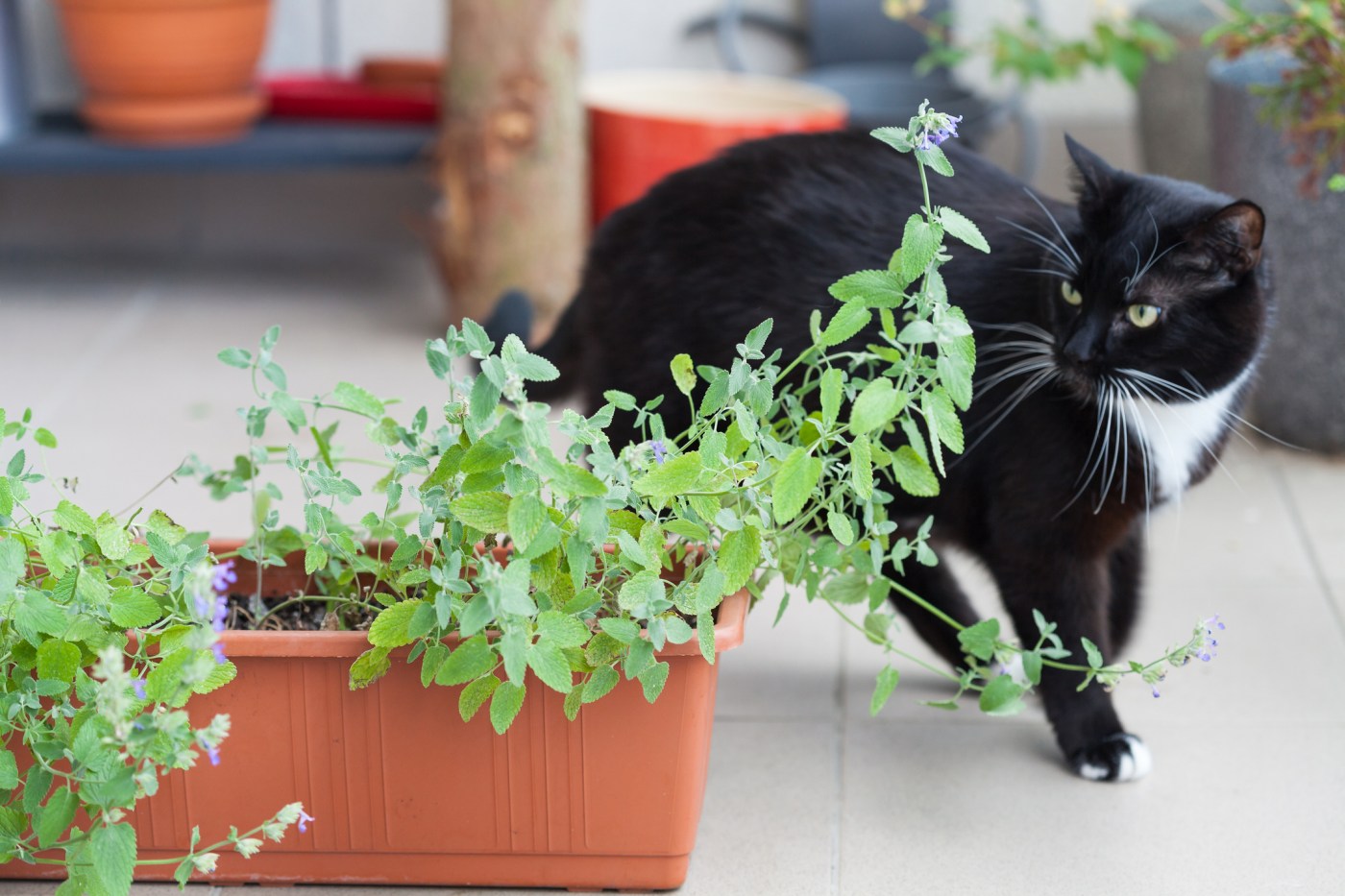DEAR JOAN: Can catnip be calming to cats? Our cats often seek out their catnip fish or catnip banana to sleep on.
One cat, when he’s stressed by the other cat eating his food or bullying him, seems to seek out his fish to lie down and put his head on. The catnip seems to calm and reassure our kitties. Is that common?
— Liz Fisher, Pleasant Hill
DEAR LIZ: Catnip can have a calming effect on cats, but typically only when they eat the nip. Otherwise, the smell usually sends them into a frenzy.
Catnip’s effect is caused by nepetalactone, which stimulates brain receptors and releases endorphins. Cats react by rolling on the catnip, and some become hyperactive or aggressive. When eaten, however, the nepetalactone has sort of an opposite effect. Endorphins are released, but they leave the cat feeling calm and content.
A small percentage of cats are immune to catnip. To them, it’s just another herb. It could be that your cats fall into this category, and the comfort and contentment they find is centered around a much loved toy.
The effects of the catnip last only 10 minutes or so. It can take up to two hours for the brain receptors to recover and be stimulated again. It could be your cats are in that down phase and are, again, just loving on their toys.
You could test these theories, if you really wanted to, by spreading some fresh catnip on a rug or blanket and then see how your cats react. Fresh catnip is far more potent than dried and older catnip, such as would be found in a toy, so use it sparingly. If they eat too much, they can upset their stomachs.
DEAR JOAN: This spring and summer we were treated to a pair of nesting hawks. I believe they were Cooper’s hawks. They put on quite a show as they were nesting. l think the male did most of the hunting, as the female remained in the nest.
The male would hunt at predictable times of the day and was much better at rodent control than our efforts; very efficient. We also noticed that the normal presence of scrub jays and crows was absent.
The hawks had two offspring, and it was interesting to watch them learn to fly and hunt. Then, all of a sudden, all four were gone. I wonder if this is normal behavior. Did they all go together or did they go their separate ways? Will they come back next spring?
— Dave Pridgen, Discovery Bay
Related Articles
Ferry, shopping, lunch: Bay Area guide dogs get some real-world training
Beacon, the beloved therapy dog of USA Gymnastics, is recovering from an unknown illness
Does dog respond better to woman’s baby talk or is she annoying her husband for no good reason?
5-year-old boy attacked by mountain lion at California park shakes up preservationists, residents
Family picnic at California park takes a terrifying turn when mountain lion attacks child
DEAR DAVE: Those are all very normal behaviors for hawks. As you noted, the male is the primary hunter at this time, supplying food for his mate while she incubates the eggs.
When the chicks are of age, they leave the nest and head out to find their own territories. The parents leave as well. The nest is only used for incubation and raising the offspring. They will have other roosting spots within the territory, but they don’t live in the nest.
Next spring, you can look for the parents to return, but not their children. The couple will use the same nest, if it’s in good shape, otherwise they likely will select a new site very near the original nest. So you should look forward to more adventures — and rodent control.
Animal Life runs on Mondays. Contact Joan Morris at AskJoanMorris@gmail.com.












